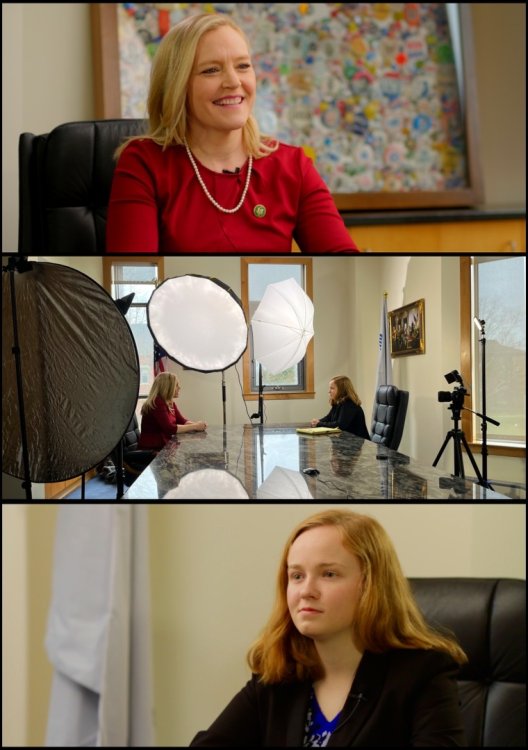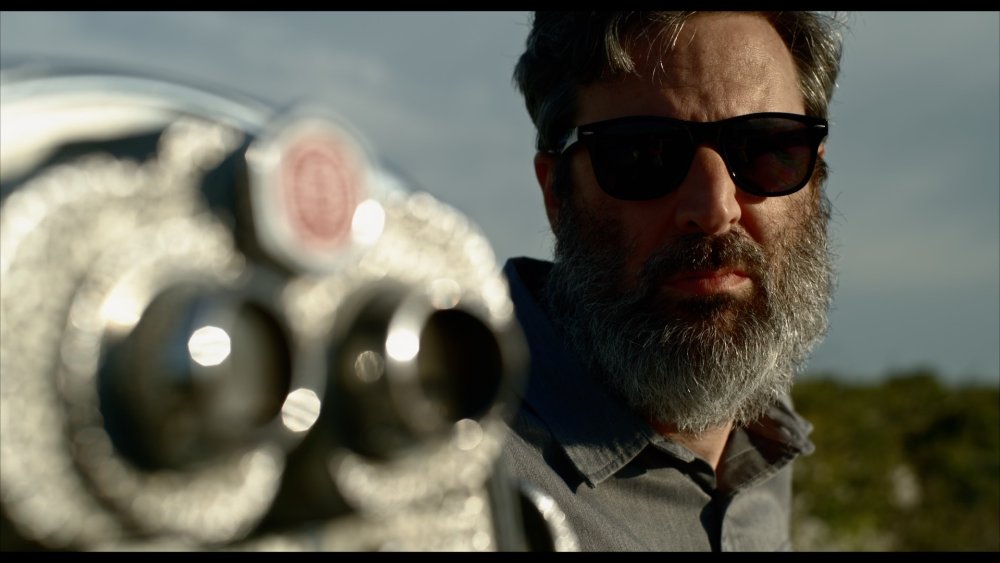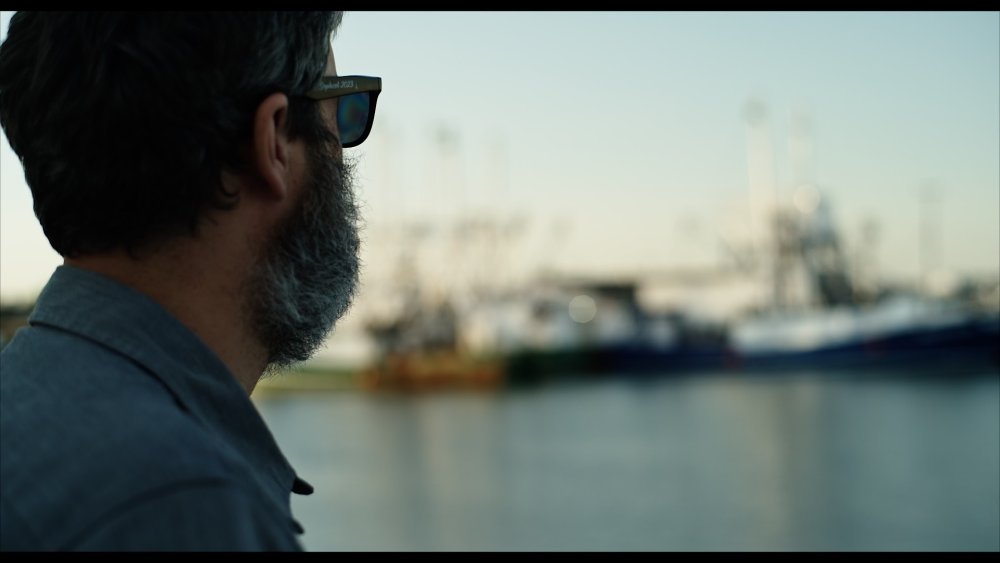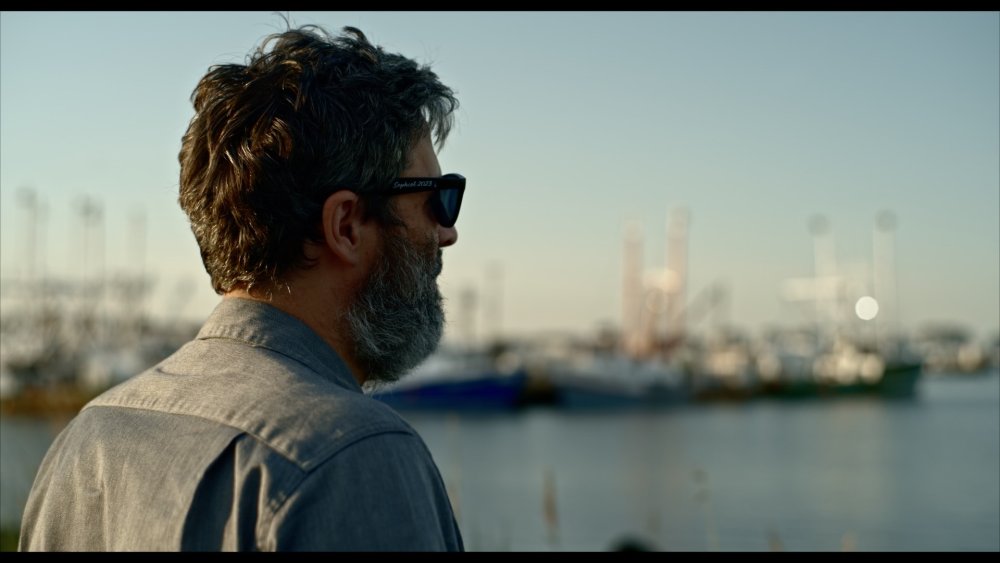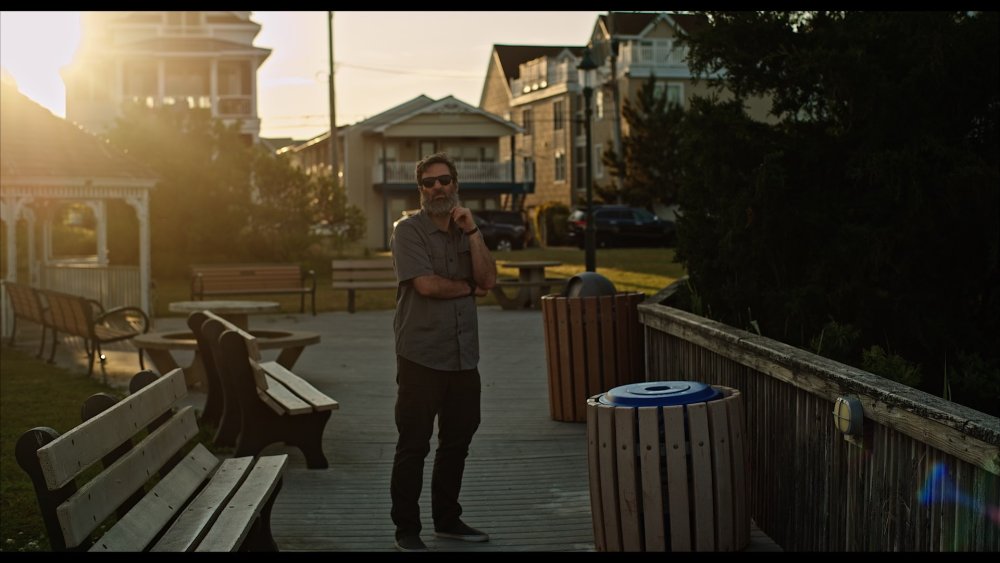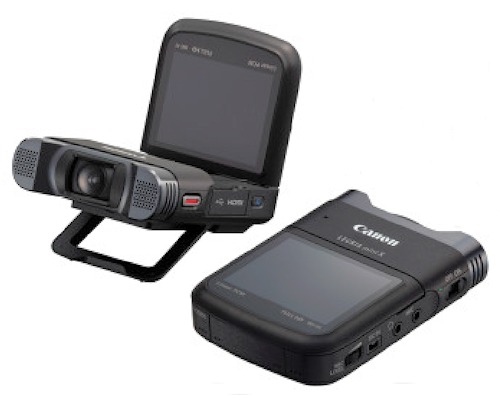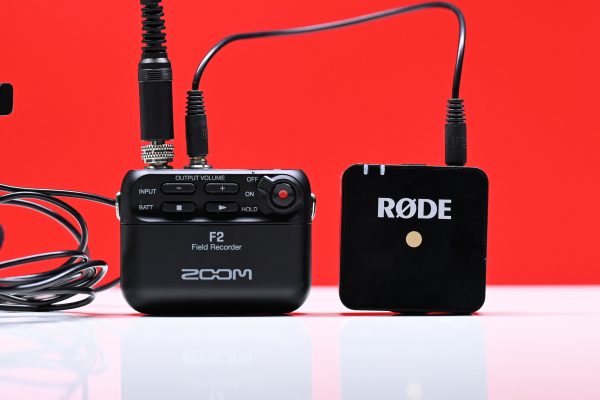Leaderboard
Popular Content
Showing content with the highest reputation on 05/31/2023 in all areas
-
1) colour The sensor in cameras is a linear device, but does have a small influence in colour because each photo site has a filter on it (which is how red, green, and blue are detected separately) and the wavelengths of light that each colour detects are tuned by the manufacturer of the filter to give optimal characteristics, so this is a small influence in the colour science of the camera. The sensor then just measures the light that hits each photo site and is completely Linear. Therefore, all the colour science (except the filter on the sensor) is in the processor that turns the Linear output into whatever 709 or Log profile is written to the card. 2) DR DR is limited by the dynamic range of the sensor, and of the noise levels, at the given ISO setting. If a sensor has more DR or less noise then the overall image has more DR. The processor can do noise reduction (spatial or temporal) and this can increase the DR of the resultant image. The processor can also compress the DR of the image through the application of un-even contrast (eg crushing the highlights) or clipping the image (eg when saving JPG images rather than RAW stills) and this would decrease the DR. 3) Highlight rolloff Sensors have nothing to do with highlight rolloff - when they reach their maximum levels they clip harder than an iPhone 4 on the surface of the sun. All highlight rolloff is created by the processor when it takes the Linear readout from the sensor and applies the colour science to the image. There is general confusion around these aspects and there is frequently talk of how one sensor or other has great highlight rolloff, which is factually incorrect. I'm happy to discuss this further if you're curious.3 points
-
Share our work
inspiredtimothy reacted to FHDcrew for a topic
Let’s share our work guys! I’ll start. Here is an interview I shot and lit the other day, featuring a congresswoman from Indians! One camera was a Nikon z6 recording into an Atomos ninja v. With a Tamron 45mm 1.8. The other was actually the ancient, cheap Canon 7D fitted with a Canon 85mm 1.2 shot at f/2.5!1 point -
I don't think there is a "most important". I tend to think of photos/video like you're looking through a window at the world, where each element of technology is a pane of glass - so to see the outside world you look through every layer. If one layer is covered in mud, or is blurry, or is tinted, or defective in some way, then the whole image pipeline will suffer from that. In this analogy, you should be trying to work out which panes of glass the most offensive aspects of the image are on, and trying to improve or replace that layer. Thinking about it like this, there is no "most important". Every layer is important, but some are worth paying more or less attention to, depending on what their current performance is and what you are trying to achieve. Of course, the only sensible test should be the final edit. Concentrating on anything other than the final edit is just optimising for the wrong outcome.1 point
-
No in Fuji's case the X-Trans sensor has a huge impact on IQ. It uses a unique non standard Color Filter Array that affects noise, moiré and detail resolution. It also avoids the need for an optical lowpass filter. The new processor in XS20 is what allows 6.2k open gate in 10-bit 4:2:2. The XT4 could only do up to 4K in 4:2:0. Also allows FLog2 and ProRes RAW out.1 point
-
Didn't you know headphones only exist in 2023 as a fashion statement for you to wear? I see tonnes of youtubers/tiktokkers using their phone as an interview mic, to be synced with later on.1 point
-
A friend is currently writing an AI trading bot. (one of zillions of such people trying to do this I am sure)1 point
-
Lenses
Ricardo Constantino reacted to mercer for a topic
In my previous post, I mentioned that I was going through my lenses and thinning the herd. Well today I have a few samples from the Zeiss ZF Classic 50mm 1.4. I bought this lens a couple years ago for VERY little money. The body had a little wear, but the price was so good, I decided it was worth it and if I didn't like it, I could EASILY recoup my costs. When the lens arrived, it had a couple issues... the Nikon F to EF adapter that was included (a "bonus!" according to the seller) was stuck on the lens... the lever that is used to release the adapter from the mount was broken off. At the time it wasn't a huge deal because I was using it on an EF camera. Here's a frame from it on my 5D3 with ML Raw... So it seemed to be a good sample but when I tried to attach a VND, I quickly realized that the threads were messed up... I could screw the filter in but it definitely wasn't right. By the feel and sound of it, it seems like the lens was dropped in the dirt. Luckily, nothing was affected mechanically, or optically, so it's no huge issue. Eventually, I'll buy a step up ring but for testing purposes, a filter will screw on with enough patience. Anyway, I bought a Sigma FP last fall and since then I have been testing different lenses with it looking for a simple little set up. So far I like the camera. It has a pretty nice image, but I'm not wowed by the IQ like I was when I first bought my 5D3... but that's a story for another time. As I mentioned in my previous post, I built a basic set of fast Nikkor ai-s lenses and I plan on selling off everything else. I'll keep a few random lenses that I really like. Back to the Zeiss... to test it with the FP, I needed to remove that damn bent adapter. Well it was no match for a pair of dykes and some needle nose pliers. In mere minutes I turned the "bonus!" adapter into a pile of metal shards. So, after enlisting my actor friend, I decided to take the lens out for a test run with the FP. Here are the results... As I mentioned earlier, I have a hot and cold feeling toward the FP, but on that day, maybe it was the light, or the beat up, pseudo-modern Zeiss optics, I think I have one of those random keeper lens... Now I just need to refrain from building a set of Zeiss lenses... Easier said than done. Thanks for reading my long, unscientific, anecdotal review.1 point -
In other news, after cancelling my pair of S5iix preorders, I made a final (honest guv) decision re. final 2023 line up…and just ordered another (used) vanilla S5ii. So cracked my 3 camera, no lens change matrix: S5ii + Sigma 16-28 f2.8 S5ii + Sigma 28-70 f2.8 S1H + Lumix 70-200 f4 Happy with that. And getting my black Sharpie out tomorrow 😬1 point
-

Panasonic S5 II (What does Panasonic have up their sleeve?)
PannySVHS reacted to hyalinejim for a topic
@deezid are you testing the 2.0 firmware for the S5II or this on the S5IIX? If S5II firmware 2.0 is there any other good news you can share at this point?1 point -

Shock horror... a vlogging camera that is actually designed for vlogging????
inspiredtimothy reacted to BTM_Pix for a topic
This is actually a bit of a rework/variation on a theme of Canon's Legria Mini/Mini X cameras from a decade ago. I had the original one and it was pretty decent for what it did at the time and I think this new one might be an idea that has now met its time. I've seen a lot of mocking about it but considering its a single purpose product then judging it on its suitability for that one purpose then it seems to have a lot going for it for a lot of its intended users.1 point -
Whilst its true that if you had the BT versions then you would be able to achieve it, even then its still not that straightforward/inexpensive as you would need the Ultrasync One for the camera and also the UltraSync Blue to connect to that to provide the BT timecode to the F2s. With the non-BT versions you will have to rely on basic audio sync in post but that has got a lot slicker over the past couple of years so, whilst far from being as ideal as having TC sync, it will still do the job albeit with an additional burden on file handling and making sure the mics are rolling etc. The issue with doing it through basic audio sync though is you still have to get good scratch audio into the camera to make the post syncing easier. This is where using a Rode Wireless Go system (or similar) in tandem with the F2s will be a big advantage if you have access to them. The output of each F2 can be attached to the input of a Wireless Go as shown here in the Newsshooter review (https://www.newsshooter.com/2021/01/14/zoom-f2-review/). The dual channel receiver can then be attached to the input of the 6K to provide good scratch audio of both F2s in the camera files whilst still taking advantage of the 32bit float audio of the recorder's own internal recordings. Of course, this setup will also be a boon in terms of remote monitoring of the audio of the F2s. Obviously you don't need to go the extra step with the transmitters/receivers and can just use any decent mic that you have around plugged into the camera but the audio monitoring aspect of such a setup for the F2s will potentially payoff in picking up issues.1 point
-

The dilema of being a Nikon Z6 shooter in 2023
inspiredtimothy reacted to kye for a topic
I think the best way to do things is this: Test your equipment to understand its limitations Use your equipment to shoot real footage Edit and deliver a real project Look at what issues / limitations there were in the final edit, then.. If you can fix them by using your equipment differently, do that (and do lots of tests) If you can fix them by learning to plan/capture/light/edit/colour/master better then go learn (understand the theory, then go do lots of tests and practice) If you can't fix them any other way AND they're worth spending the money to solve AND it won't hurt you in some other way THEN spend money to fix them Go to step 2 That's it. Only ever fix problems that you encounter in post on real projects - the rest is just BS. Step 7 is particularly brutal as well, because often we're faced with choices where we can improve one thing but it kills other aspects of the process. This is where the "60 seconds can seem so long" comes in. I routinely find that I have clips that contain 1s of good video but that's hard to use in an edit and I'd actually want to include 1s prior to that, but I wasn't fast enough in setting up the shot in order to get it. I developed the technique of hitting record on the camera before I frame and focus because it means that I can use the clip from the very first frame that is in focus. In that sense even 1s is the difference between a usable shot and it being very difficult to use.1 point -
The dilema of being a Nikon Z6 shooter in 2023
inspiredtimothy reacted to FHDcrew for a topic
100% agree with you here. And it’s like my mind has been split. A good chunk has consistently been in the mindset of stop worrying about gear. Just keep progressing and learning as you go. And I see the results; what I make now in all aspects is better than what I made 2 years ago. When I was shooting with the exact same gear. I really see the impact learning various skills such as lighting and color grading have really amped up my visuals. But yes I still struggle with the very tendency I know is awful and tell people never to get into. The tendency to obsess over gear, having those “if only” moments. I spoke to a friend who shoots on a Nikon D850. Told him about how I wanted to upgrade from my Z6. He asked why, I said because I don’t like how long it takes to use the Atomos Ninja V / Ninja Star each time I setup.He asked how long it takes to setup, I said maybe a minute at the longest His reply: “Isn’t it funny how just 60 seconds can seem so long?” Anyways, thanks for the therapy session @kye. I need to not worry about upgrading my camera because I genuinely don’t need to do so.1 point -

The dilema of being a Nikon Z6 shooter in 2023
inspiredtimothy reacted to kye for a topic
I totally understand why people are trying to buy their way to better videos, it's a much easier experience to research cameras and discuss (dream) about what cool new things you could buy, and it's brutal to admit you don't know much about a subject and start studying it (forcing your brain to work hard) and to do that for months and months. Unfortunately, that's what it takes to actually become a better film-maker. I posted over in the "Once in a lifetime shoot" thread about the Tokyo episode of Parts Unknown that won a bunch of awards, but long story short, the cinematography didn't include any shots that were amazing in a grandiose kind of way, but it had a huge variety of solid shots from creative angles the editing and sound design were absolutely spectacular - end result.. awards and nominations, and a great viewing experience that is far from the pedestrian nature of most professional content, let alone us mere mortals. The innovative nature of that episode alone is enough to make you crawl into the foetal position under the blankets, but the news is actually tremendous... most of the content in the world is so bland by comparison that to create solid professional-level edits you don't have to get to knowing 80% of what the greats know - a solid 20% will do just fine.1 point


